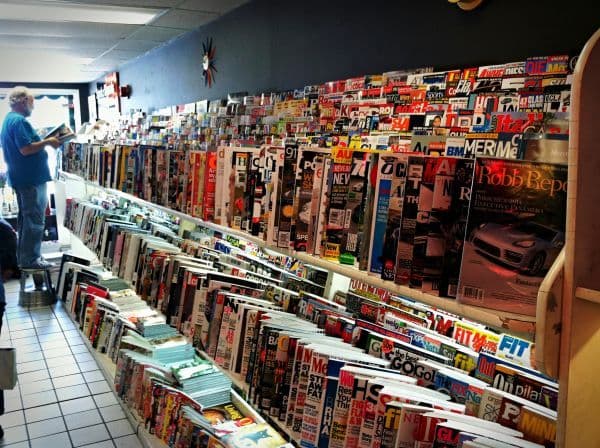2014: The Magazine Distribution Channel How Much Longer Can the Unsustainable be Sustained?
By John Harrington
Tue, Jan 14, 2014

It is hard to imagine that any business could lose nearly 40% of it volume over a five year period and continue to function in an acceptable fashion, but that is what has happened to the mass market distribution channel over the five years between 2007 and 2012. The final numbers for 2013 are not complete, but there is absolutely no reason to expect anything better; in fact all the indications are that they may even be worse. On top of that, remember that the financial performance of the channel's wholesaler level had been shaky for more that a decade preceding the abysmal numbers of the most recent six years. Just considering these simple and unchallengeable facts, is it unimaginable that 2014 turns out to be the year that the channel collapses?
Consider how last year ended, and also how the new year is beginning. In November, TNG, the largest wholesaler group, unilaterally imposed a schedule of distribution surcharges, ranging from two cents to eight cents per copy on all but 135 of the thousands of magazine titles it distributes. No publisher was unaffected.
Aggressive competition among the major wholesalers for chain retailers reignited, even in some markets where it had rarely been the norm. No one expects it will make the business more profitable. The two other large wholesaler groups are widely expected to follow the lead of TNG and propose new charges. Earlier in the year, after a lengthy period of distress, Mercury Retail Services, arguably one of the largest partners in The News Group, L.P., left the business. Although most of its retail customers were picked up by other members of the partnership, there was little enthusiasm among those whose businesses expanded. In December, one of the few independent wholesalers dating back to pre-1995, Gopher News, closed its doors. Neighboring wholesalers assumed responsibility for delivering to Gopher's customers. And in the adjacent column, we report that Benjamin News, one of Canada's largest wholesalers, announced it will cease operations in April. Again, arrangements were made for most of its retailers to be serviced, but as one of the wholesalers assuming the responsibility noted, it will be a "challenge." Frankly, if wholesalers like Mercury, Gopher, and Benjamin found delivering magazines in these markets to be unprofitable, why should it be different for the "new" players?
In the banking industry, a popular phrase is "too big to fail," referring essentially to the bailout in 2008 by the federal government of the business, although several investment bankers did disappear. At times, it seems as if a similar attitude of "too big to fail" pervades the magazine distribution business. You might think that after Anderson News, then generally acknowledged to be the second largest wholesaler, ceased doing business in 2009, the idea would have little credibility. Remember as well, that at last June's Retail MarketPlace Conference, the COO of Hudson Distributors, the third largest wholesaler, said publicly, "If something doesn't change, we will be flat out closed!"
Magazine wholesalers are basically fixed costs operations: warehouses, pick and pack systems, trucks, merchandising support, and return processing operations. Over the years, cost cutting has taken everything that can be spared, and maybe even a little more, out of the business. So, the question is how do they survive when the volume of their business has declined by more than 40% or more over a six year period? The answer might be that they do not! In the very recent past, for three companies, that did prove to be the answer.
For more than a decade after 1995, when the economics of the channel were turned upside down, the largest wholesalers survived, apparently convinced that rational footprints would emerge and sales levels would at least be maintained, if not even grow some. However, after a combination of the Great Recession and warp speed technology development that changed all media drove sales off a cliff, those remaining companies are having to reconsider their commitment to the future.
Each of the three large wholesalers have considerable resources that have allowed them to keep operating. However, they did not build those resources by supporting operations that do not offer the prospect of achieving reasonable profit levels. Some smaller companies recently made the decision that they could no longer support that kind of strategy. Will 2014 be the year that one or more of the biggest players makes the same decision? ■
